Inextricably woven into the tapestry of culture
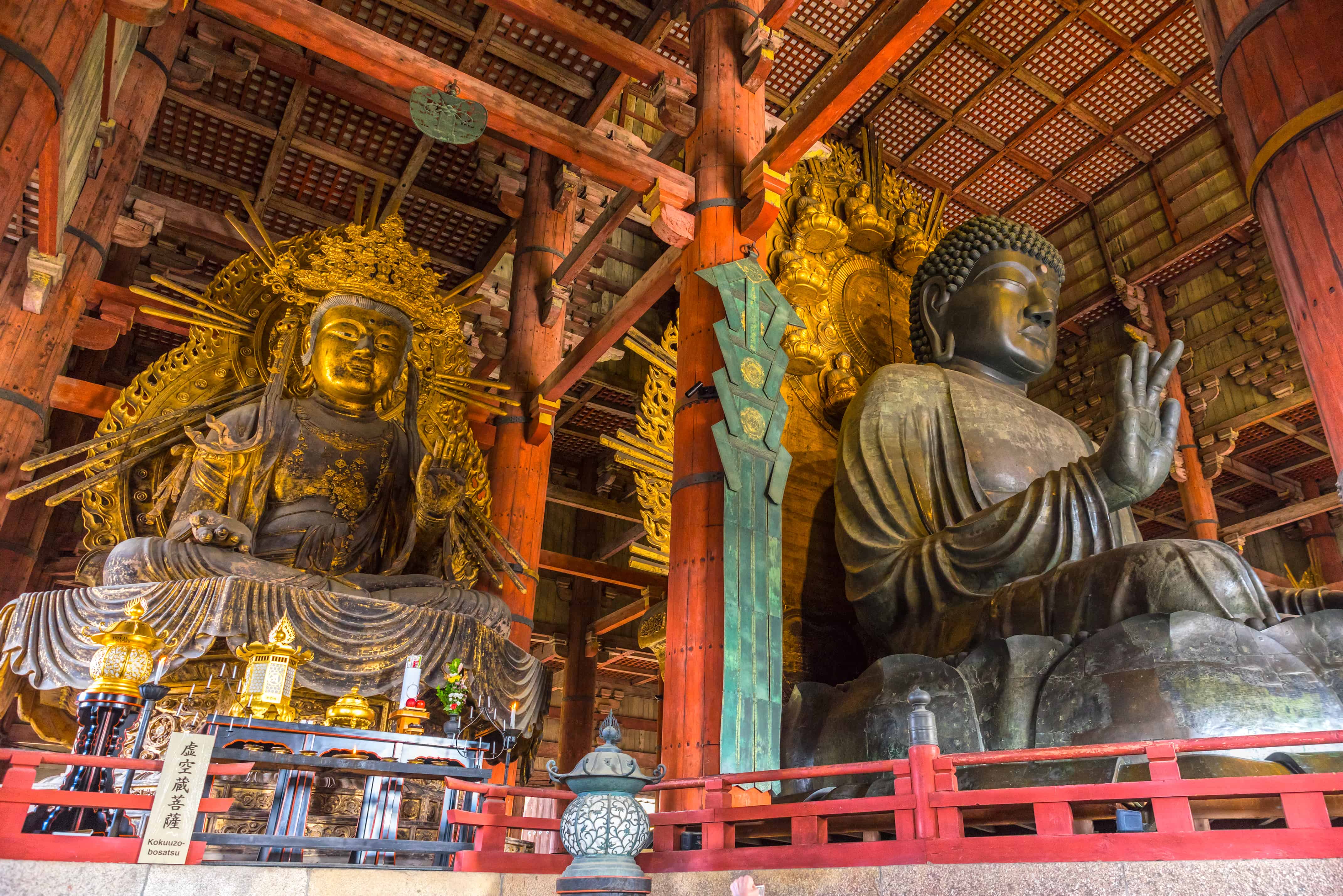
A walk down the hill from my house takes me to the grounds of a Shinto shrine. For more than 250 years, though, that shrine had been a Buddhist temple.
Remnants of those former years are kept in a small clearing in the forest near the shrine — a broken Nio Guardian deity and some statues that have been repaired after being defaced, mossy gravestones and gorintō (small stone pagodas used as memorials for the dead) gathered together after having been scattered in the forest.
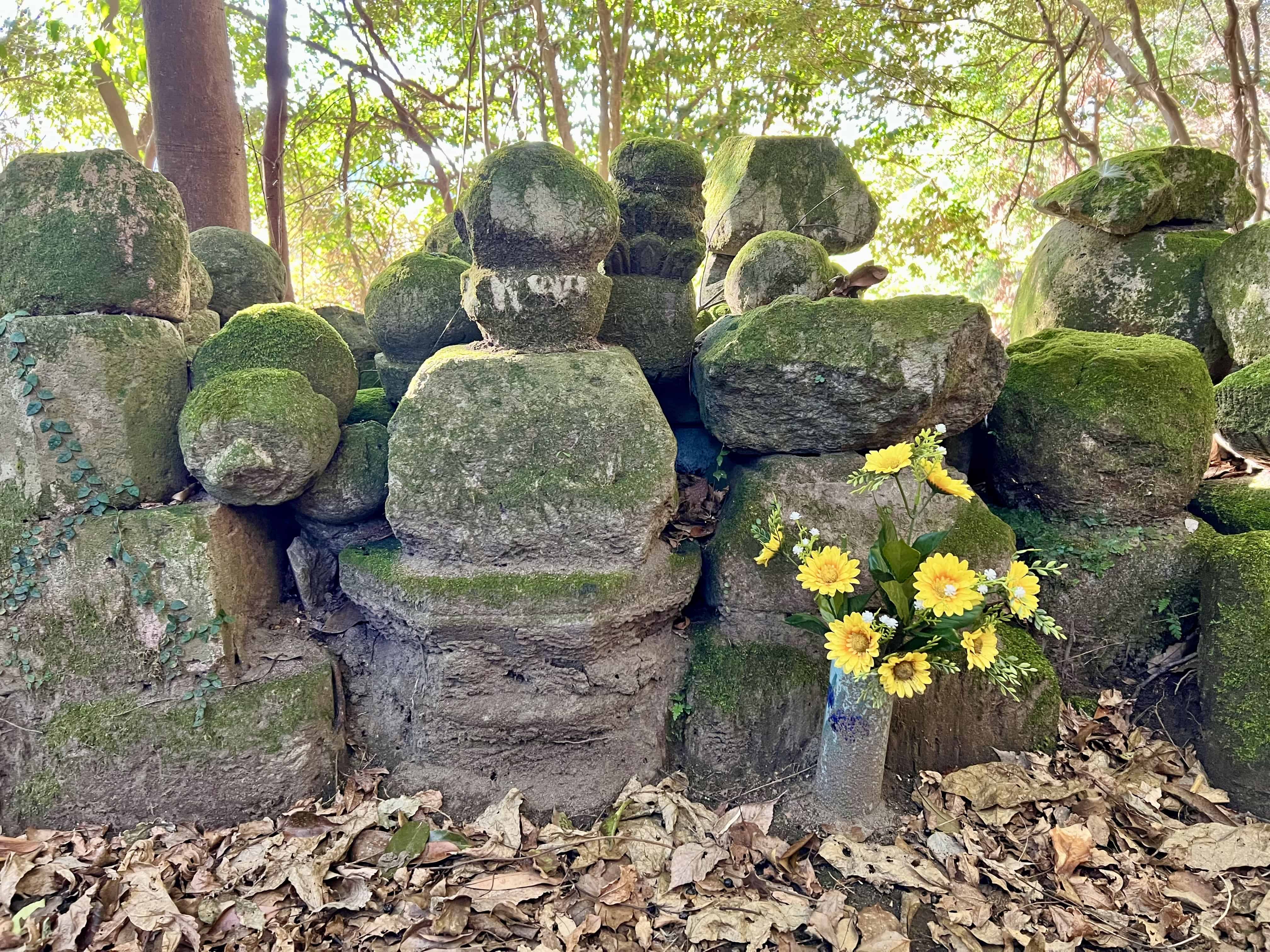
This is not unusual. A visit to any temple in my prefecture of Kagoshima reveals the same troubled past. Yet, despite this unfortunate historic episode of widespread destruction, Buddhism has had a tremendous influence in Japan, profoundly impacting the culture.
One school of Buddhism, Zen, gave birth to many of the arts we consider quintessentially Japanese —
- Noh theater
- Ikebana flower arranging
- Tea ceremony
- Japanese ink painting
What is Buddhism?
Buddhism, practiced by seven percent of the world’s population, offers humanity a path to escape the endless cycle of death and rebirth known as samsara. To the Buddhist, the root cause of all suffering is desire, so the goal is to free oneself from earthly desires and accumulate enough good karma so that one can attain enlightenment. Enlightened ones are themselves buddhas, omniscient beings who have transcended human desires and entered the state of nirvana.
How one reaches this goal differs according to the various Buddhist schools of thought.
Origins
Buddhism’s founder, Siddhartha Gautama, was born a prince in southern Nepal in 563 BC. He left his courtly life in search of meaning, and through his years of wanderings, developed what has come to be known as Buddhist philosophy. After his death, his teachings were transcribed by his followers. These texts are the sutras still read and chanted today at Buddhist temples.
Early Japanese Buddhism
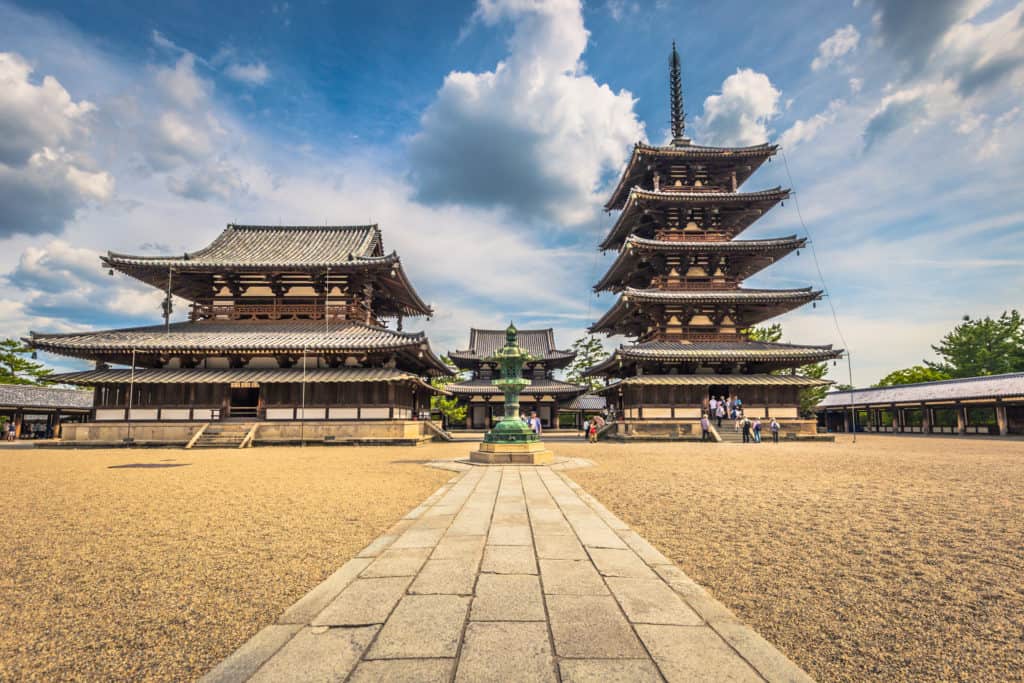
Buddhism was brought from the Korean peninsula to Japan in the 6th century. After initial resistance by certain influential clans, this new religion was adopted by the ruling class.
Towards the end of the 6th century, Regent Prince Shotoku made Buddhism the national religion. He ordered the building of the Hōryuji temple in his capital, which still stands as the oldest wooden structure in the world and a UNESCO Cultural Heritage.
During this period, Buddhism was a monastic religion set up as the protector of the nation.
Nara era (710-794)
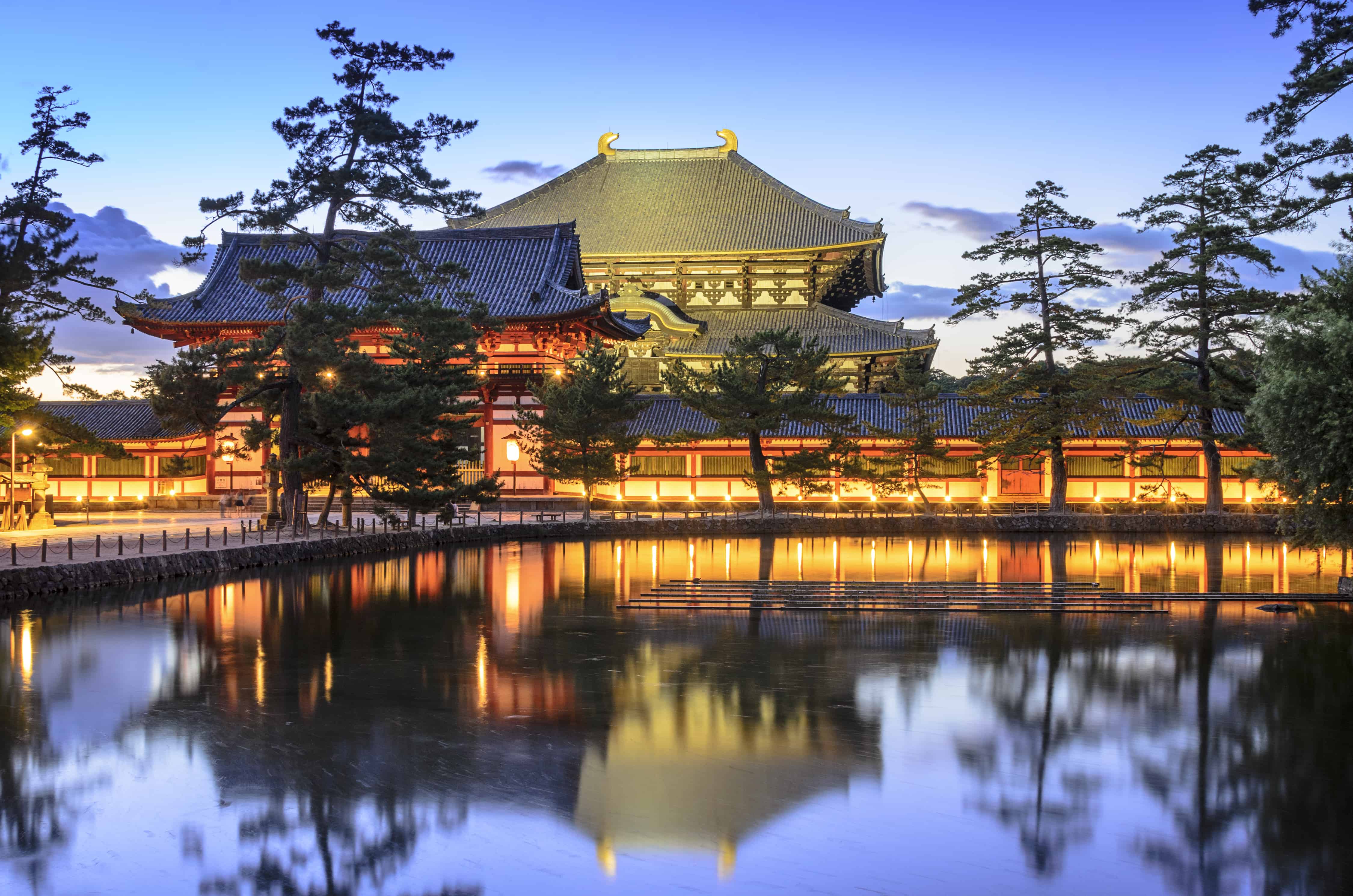
In the 8th century, after a smallpox outbreak wiped out one-third of the Japanese population, Emperor Shōmu ordered temples and nunneries to be established in each province to protect their areas from epidemics and bad harvests.
Beyond their spiritual functions, temples served as centers for education and culture, as well as hospitals and refuges. Many well-educated Buddhist monks headed large engineering projects, overseeing the financing and construction of waterworks and roads.
Temples were granted tax exempt status, and it wasn’t long before corruption took hold. To combat this, Emperor Shōmu sent emissaries to China to bring back a monk capable of establishing official precepts for the ordination of Buddhist monks. The chosen monk was Ganjin, already in his 50s, whose journey to Japan was thwarted by storms and shipwrecks. After five failed attempts, and being blinded from an infection contracted during a shipwreck, Ganjin, at the age of 66, persevered one last time. On his sixth attempt in 754, he finally set foot on southern Kyushu.
Ganjin set up Japan’s first ordination platform at Todaiji temple in Nara, then one at Dazaifu, “The Western Capital” in northern Kyushu, and another in Tochigi. With hopes of keeping the purity of Buddhist belief unspoiled, he codified the precepts for priests.
Shinbutsu shugo
Over the centuries, Buddhism merged with Shinto, Japan’s indigenous religion, and a uniquely Japanese belief system developed known as Shinbutsu Shugo, 神仏習合. Buddhist temples were built on the grounds of Shinto shrines, and vice versa, demonstrating devotion to both Shinto kami (gods) and Buddhas. One school of thought was that fallible kami needed Buddhist teachings to grow and learn, just like humanity, while another professed that high Shinto kami were manifestations of certain Buddhas. Nevertheless, these two religions coexisted in harmony for centuries.
During the 8th century, three main schools of Buddhism — Ritsu, Kegon, and Hossō —developed and began wielding significant influence on the Imperial Court. So significant, in fact, that one Buddhist priest attempted to take the throne.
Heian era (794-1185)
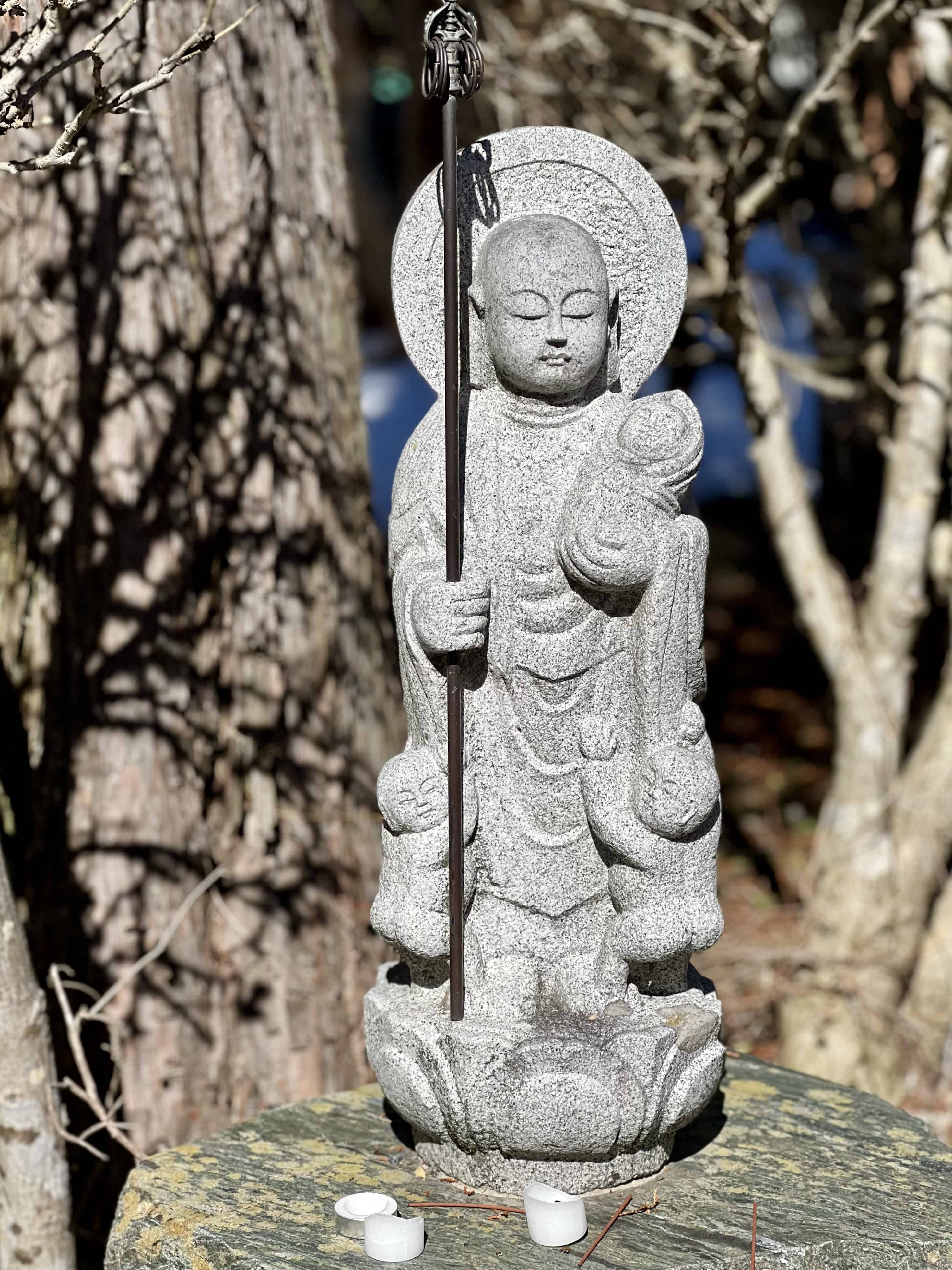
To distance the Imperial Court from the reach of the influential Buddhists in Nara, Emperor Kanmu moved the capital to Heian-Kyo, now Kyoto, at the end of the 8th century. At first, only two temples were allowed within the new capital, To-ji and Sai-ji, the Eastern and Western Temples. To-ji remains today much as it has for the last 1,200 years.
Esoteric Buddhism
In the 9th century, two monks brought back different schools of esoteric Buddhism from China — Saicho, who founded the Tendai religion, and Kūkai, who founded Shingon.
Both schools espoused the concept of an eternal and universal Buddha, with Siddhartha Gautama, the historical Buddha, a manifestation of this cosmic spirit. According to this philosophy, within every being resides an element of the cosmic Buddha, so all could develop their inborn Buddha nature and attain salvation.
Commonalities among these sects include the concepts of karma and rebirth, monasticism, and the importance of self-discipline. Their teachings held that as long as individuals remained attached to desire, suffering was inevitable. To break free from the cycle of suffering and rebirth, entering a monastery for study and the practice of asceticism was considered the most effective path.
Tendai, Shingon, and all further schools of Buddhism share the belief in bodhisattvas, individuals who have accumulated enough merit — good karma — to attain nirvana and escape the cycle of rebirth. This they selflessly gave up to help others on their journeys toward enlightenment. Similar to saints in Christianity, believers pray to compassionate bodhisattvas for guidance, help, and protection.
Tendai
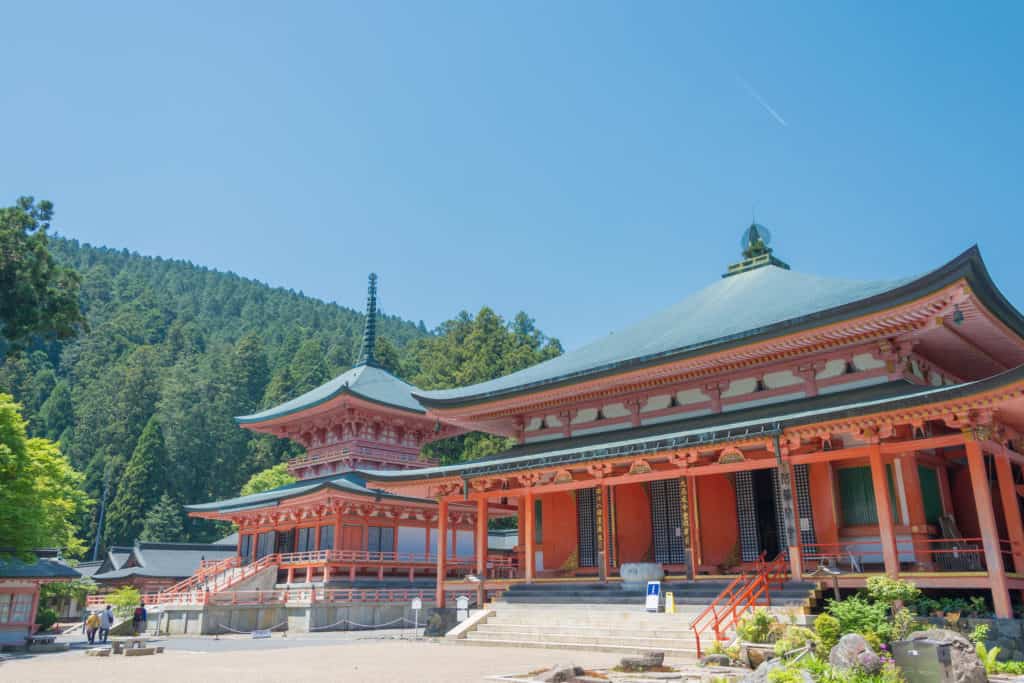
Saicho, convinced of the necessity for self-guidance and spiritual enlightenment, established the Enryakuji temple complex on Mount Hiei, northeast of Kyoto. There, monks could immerse themselves in extensive learning, with abundant books, and a minimum of food, clothing, and shelter — the perfect environment to lay aside physical desires and strive for enlightenment.
Saicho envisioned Enryakuji as a university of sorts, where monks could be educated in all Buddhist teachings, regardless of sect. The temple complex evolved into a center of Japanese higher learning and Buddhist study, instrumental in the education of future founders of various Buddhist schools.
In the Tendai tradition, believers sought Buddhahood through the cyclical process of death and rebirth, laying aside desires, accumulating karma, and ultimately paving the way to nirvana. As well, Saicho advocated for the monks to use their knowledge and skills to contribute to the well-being of the nation.
Shingon
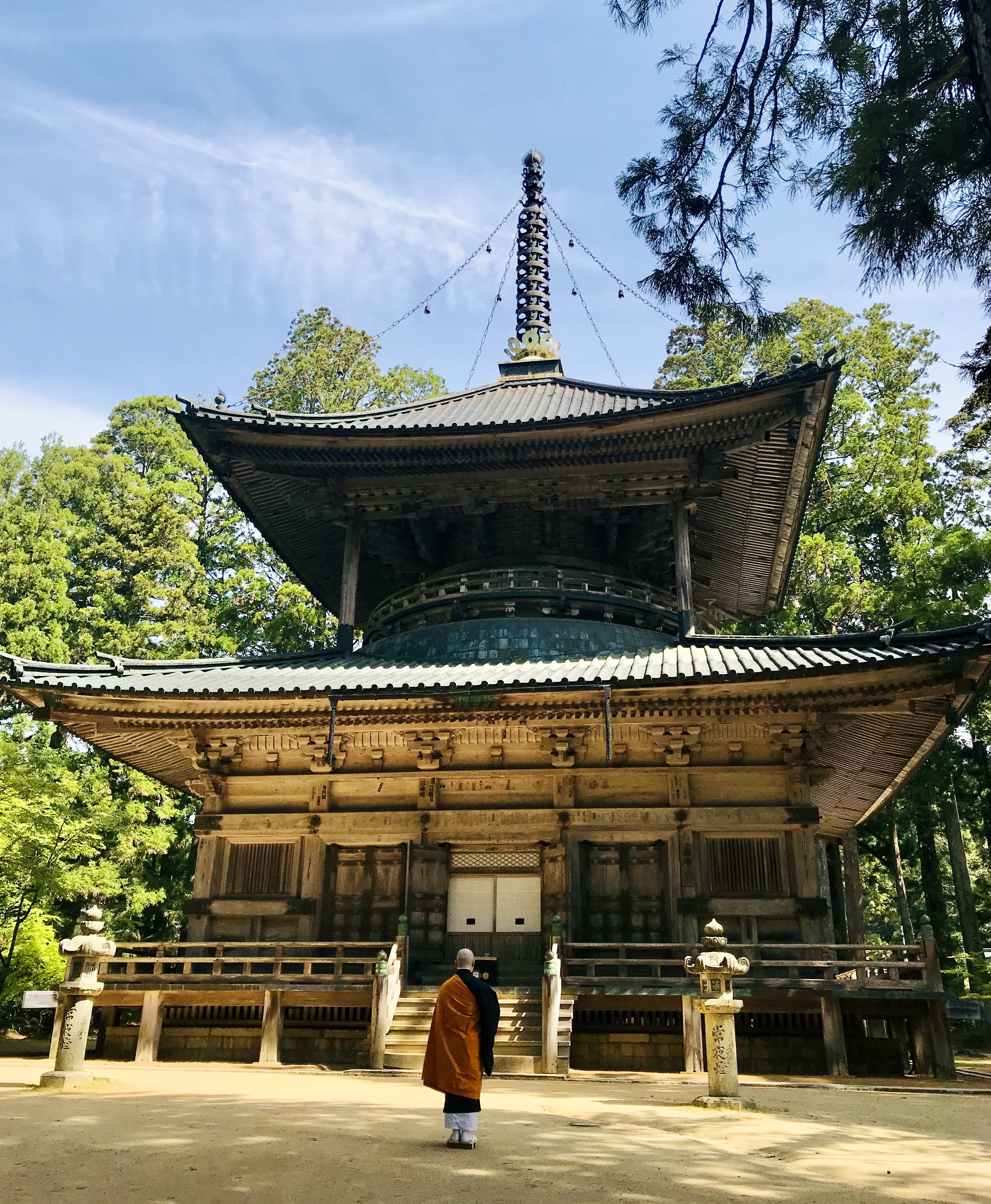
After returning from China, Kūkai set up his headquarters on Mount Kōya, in the mountains of Wakayama, south of Kyoto.
Kūkai emphasized to his followers that the path to enlightenment could only be truly grasped under the guidance of teachers, ideally within a monastery. Shingon monks dedicated their time to meditating, using
- mandalas — sacred images depicting the cosmic Buddha’s boundless power
- mantras — sacred words; Shingon means mantra, or “true word”
- mudras — sacred hand positions
In contrast to the Tendai tradition, Kūkai taught that the ultimate aim of meditation and study was union with the cosmic Buddha during one’s lifetime. Dedicated practitioners of Shingon could reach the point of satori, enlightenment while still in existence.
Although Kūkai established the first school for commoners at Tōji temple in Kyoto, Buddhism continued to be predominantly practiced by the aristocracy.
Pure Land Buddhism
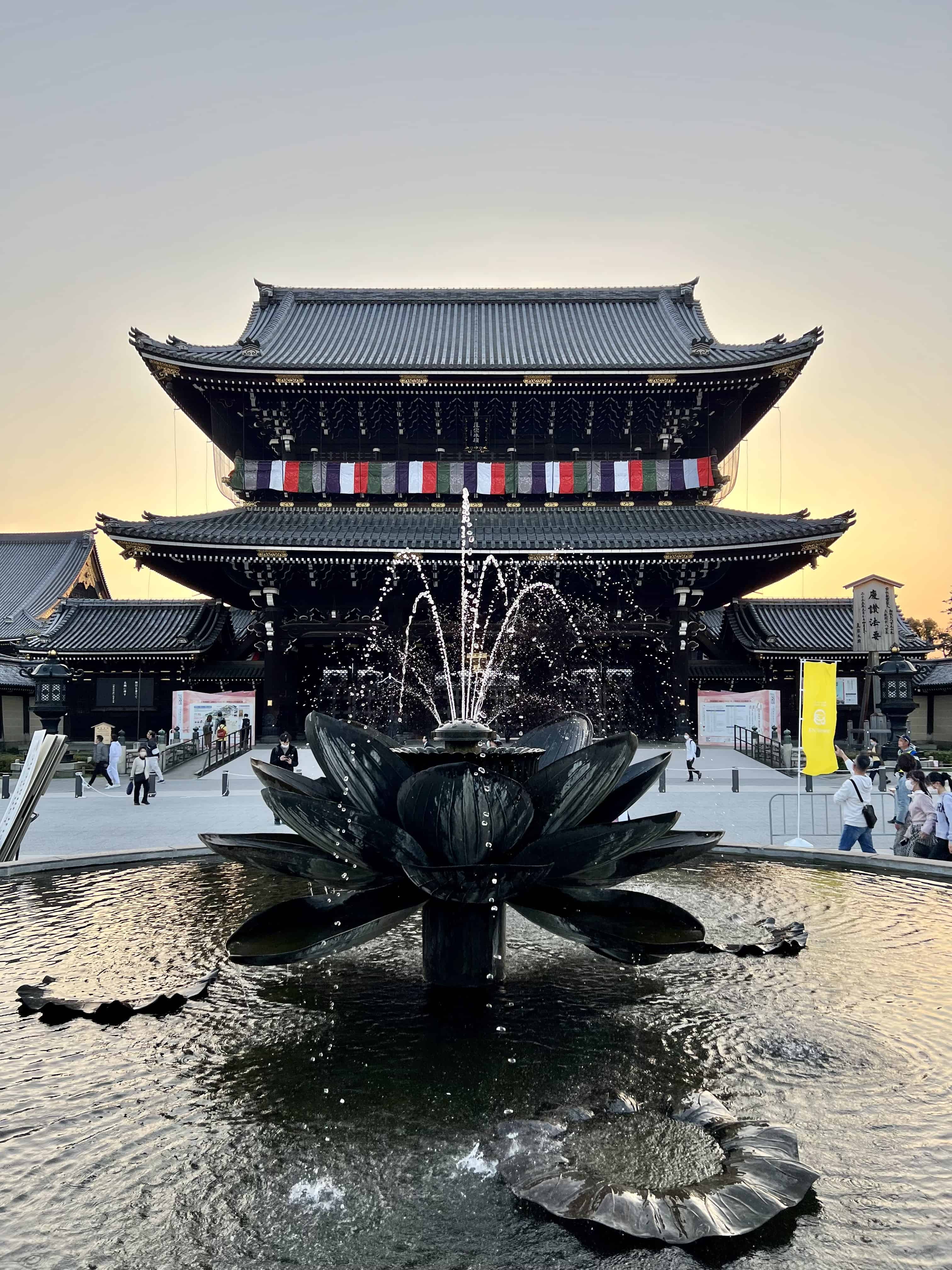
Jōdo-shu
In the 10th century, the Pure Land school of thought rose from the ground of Tendai through Honen, a monk trained at Enryakuji Temple.
Not unlike the Protestant Reformation that swept Europe in the 16th century, Honen taught that faith in Amida Nyorai was all that was necessary to reach the Pure Land. According to his teachings, believers attained salvation by expressing their devotion through the recitation of the Nenbutsu, Namu amida butsu, 南無阿弥陀仏, “I take refuge in Amida Nyorai,” declaring their faith in the saving grace of Amida Nyorai. The diligent recitation of this prayer was believed to enable souls to be reborn in the heavenly Pure Land.
Honen’s emphasis on the simplicity of faith and the transformative power of the Nenbutsu marked a drastic departure from more complex doctrinal practices, making the Pure Land school an influential force welcomed by the common people.
Jōdo Shinshū
In the 13th century, Honen’s disciple, Shinran, established New Pure Land Buddhism, Jōdo Shinshū. Also trained at Enryakuji, Shinran broke with Tendai to start his own sect based on the fundamental belief in the equality of all individuals, irrespective of societal position or status. All people were equally worthy of salvation.
Shinran took the Pure Land doctrine further by declaring that humanity’s only hope lay in the saving grace of Amida Nyorai, with preference given to the seemingly most unworthy. Jōdo Shinshū was eagerly received by farmers, merchants, and even some local lords and samurai.
Jisshu
Another Pure Land sect, Jisshu, was founded in the 13th century by a former Tendai monk named Ippen. He traveled throughout Japan, distributing prayer cards inscribed with the nenbutsu while expressing his joy through dance. Ippen taught that the way to salvation was found in the repetition of the nenbutsu — an individual’s efforts were inconsequential.
According to Ippen, even faith was not a prerequisite for salvation, as the absolute power of Buddha transcended the need for belief. Through chanting, individuals can attain a state of oneness with the Buddha.
Kamakura through Azuchi-Momoyama eras (1185–1600)
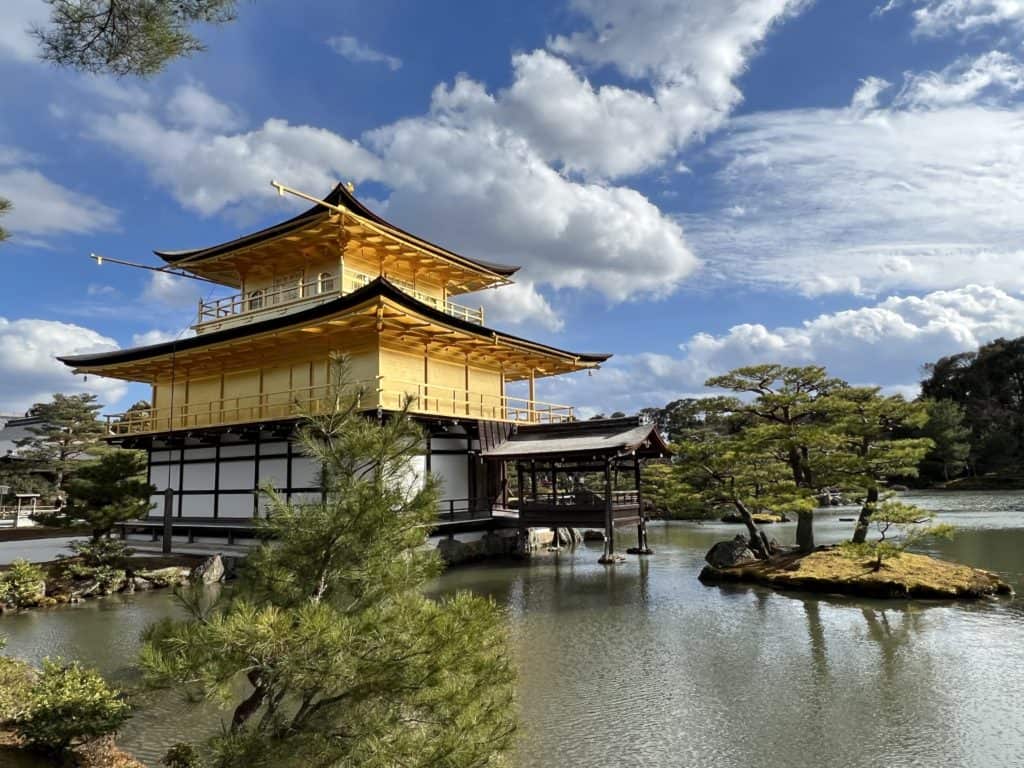
Zen
The simple, rustic, and unadorned lifestyle of Zen was embraced by the warrior class of the Kamakura Era. Practicing Zen brought calm to their troubled lives and gave them meaning, and a way to live and die peacefully.
Rinzai
At the end of the 12th century, Eisai, another monk who had studied at Enryakuji Temple, visited China and brought back Rinzai Zen Buddhism. Based on seated meditation, Eisai emphasized enlightenment by emptying the mind, mindfulness, martial arts, and the use of koans, paradoxical statements or questions, to encourage intuitive growth.
He also brought back tea seeds which he planted on Hirado Island and in the mountains of Kyushu. Initially used to keep Zen practitioners awake during meditation, green tea is now Japan’s most widely consumed beverage.
Sōtō
Another monk who studied at Enryakuji Temple, Dōgen, visited China and brought back the Sōtō school of Zen. Dōgen’s teachings kept things simple. Believers were to sit in meditation, emptying their minds, until enlightenment came upon them. Wanting to remove himself from the capital and other Buddhist influences, he built his main Eiheiji temple complex deep in the mountains of what is now Fukui Prefecture.
Dōgen taught that every individual possesses the essence of the Buddha. However, failing to realize this, we often live selfish, willful lives, resulting in suffering. Seeking refuge in Buddha allows our minds to find rest, our lives to be filled with harmony and light, and instills in us a sense of joy in being of service to society.
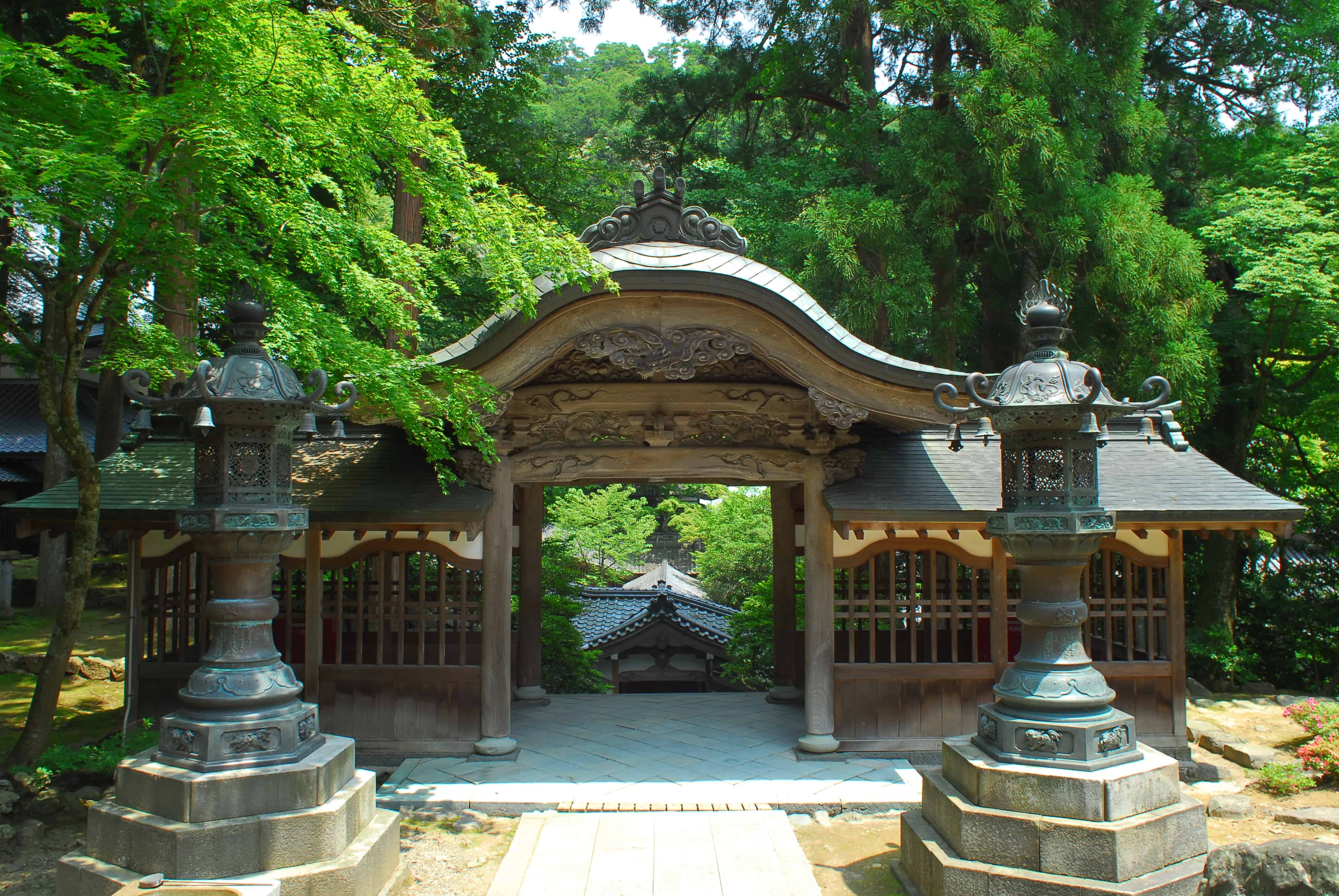
Nichiren
Nichiren upheld the supremacy of the Lotus Sutra. According to him, through the wholehearted chanting of “Namu myōhō renge kyō” — All Hail to the Lotus Sutra — one can unite with the cosmic Buddha and achieve enlightenment. This chanting would activate an individual’s inherent Buddha-nature, unleashing power and wisdom that allowed for a life akin to a ‘lotus flower in a muddy pond.’ This enlightenment was available to all beings, allowing one to attain Buddhahood within one’s lifetime.
Edo Era (1603-1867)
Ōbaku Zen
The other main school of Zen was brought to Japan in the early 17th century by a Chinese monk, Ingen, after the fall of the Ming Dynasty. Curiously, Ingen had been a monk of the Linji School, which was the forerunner of Rinzai. Through the years, Rinzai in Japan developed separately from Linji in China, so that when Ingen reached Japan the religion he brought was so unlike Rinzai that it became a new sect of Zen, Ōbaku.
As a side note, he also brought green beans, called in Japanese, Ingen-mame — Ingen beans.
Meiji era (1868-1912)
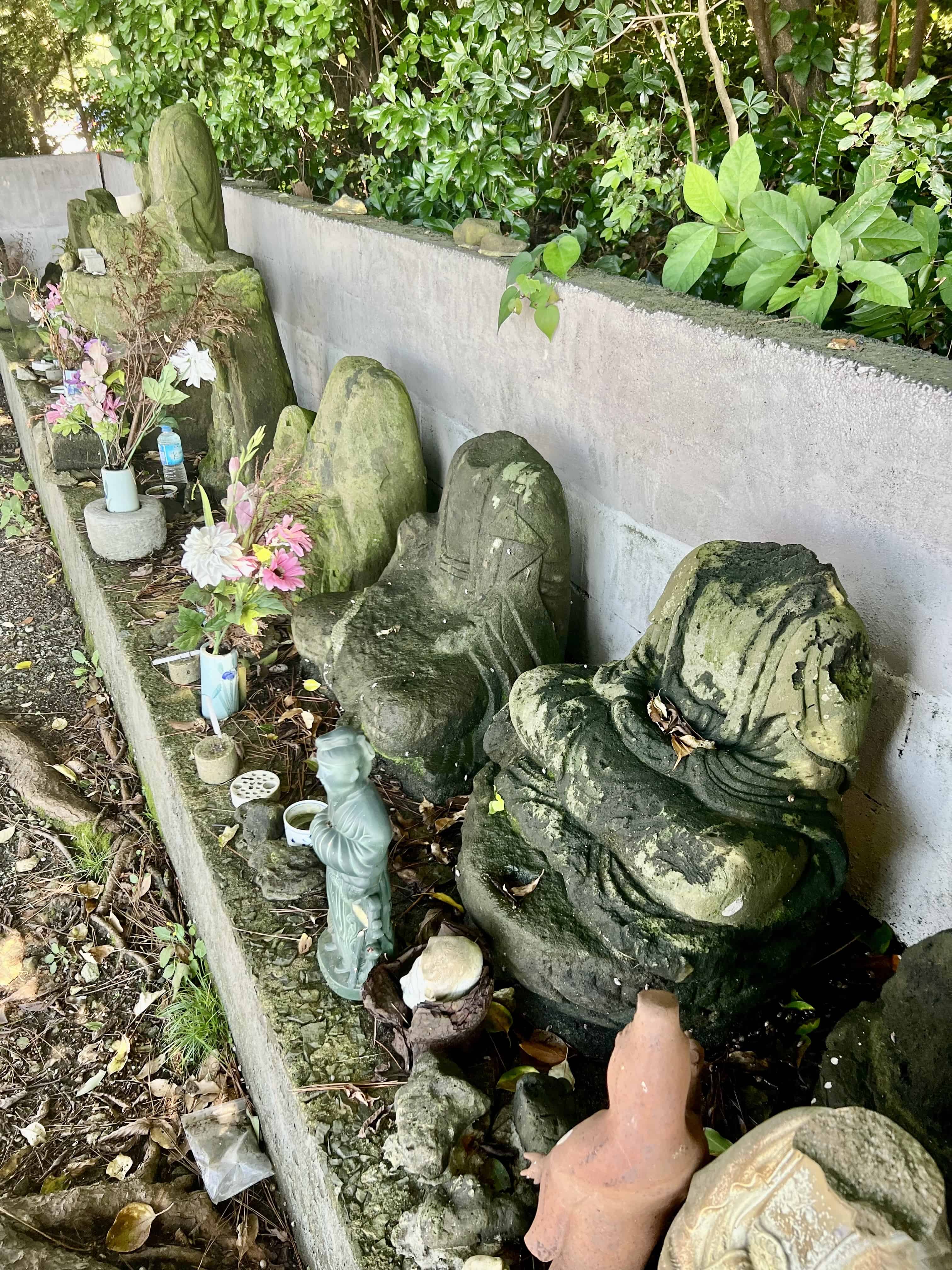
In the late 18th century, intellectuals of Kokugaku, or National Learning, promoted Shinto as the national religion and denounced Buddhism as an unnecessary foreign intrusion.
In 1867, the last Tokugawa shogun returned political power to the emperor. Emperor Meiji, the “son of heaven” and direct descendant of the Shinto Sun Goddess, Amaterasu Omikami, assumed leadership of Japan.
The elevation of the emperor’s status left little room for Buddhism, leading to the government’s enactment of The Kami and Buddhas Separation Order, 神仏判然令, Shinbutsu Hanzenrei. This order forcibly separated the religions that had existed in harmony for centuries, often sharing the same sacred grounds. The aftermath saw a period of zealous destruction of Buddhist temples, art, and sutras. Many Buddhist priests abandoned their monastic lives, while others became Shinto priests, converting their temples to shrines.
Over time, this zealous persecution waned, allowing Buddhism to regain strength and popularity. Although, the destruction of countless works of art has left its mark on Japan’s cultural heritage.
Buddhism today
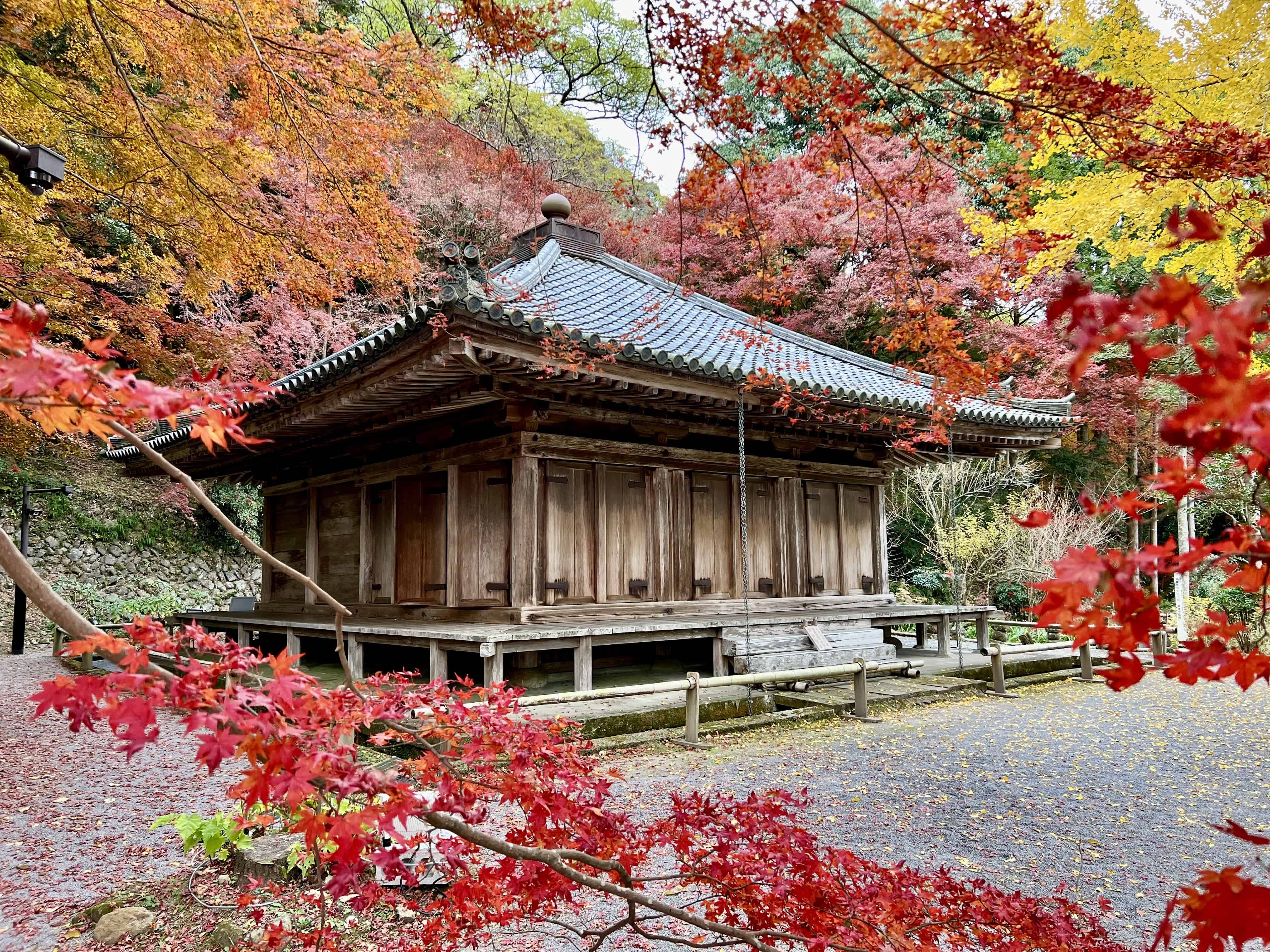
Buddhism and Shinto again coexist peacefully, but the scars remain. Broken and defaced statues continue to be found in forests and rivers. Former temples remain as shrines.
Many schools of Buddhism remain active in Japan, among them, according to the Agency for Cultural Affairs, Pure Land sects stand out as the most popular, with a combined membership of over 21 million. As you can see, they hold the top three positions in this statistical breakdown:
- New Pure Land, Hongaji sect 7,840,000
- Otani sect of Pure Land, Higashi Honganji 7,350,000
- Pure Land 6,020,000
- Sōtō Zen 3,670,000
- Tendai 1,530,000
- Shingon 1,420,000*
*Data from the Mount Koya sect was unavailable.
Religion in Japan
But what of other religions? Looking at more government statistics, we find the following breakdown among the Japanese population:
- 69% Shinto
- 58% Buddhist
- 1% Christian
- 5.7% Other
Those numbers don’t quite add up until we stop to realize that Buddhism and Shinto are non-exclusive religions. One can be both a practicing Shinto and a practicing Buddhist and, clearly, many people are.
Japan’s religious syncretism has been described as “Born a Shinto, married a Christian, die a Buddhist.” In many ways, this is true. The religions are beautifully harmonious. Shinto is a celebration of life, milestones, and joy. Widely idealized by the media, many people enjoy the novelty of a Christian — or pseudo-Christian — wedding. While Buddhist beliefs focus on death and the afterlife, completing the cycle of life’s significant events.
Would that all the world’s religions could coexist in such harmony.
If you have questions about Japan or suggestions for articles, please add them in the comments. For more photos and information on Japan, follow me on instagram at: https://www.instagram.com/more_than_tokyo/




